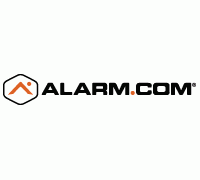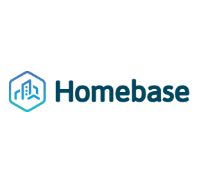Bruce Wright, Business Development Director, Americas Business Unit, AirTies Wireless Networks, provided insight on several key industry trends ahead of Parks Associates’ 21st-annual CONNECTIONS™ Conference, which will be held May 23-25 at the Hyatt Regency San Francisco Airport:
How is your company engaging consumers through new technology solutions?
Today we are seeing many service providers investing heavily to bring faster Internet speeds to the home, but factors including home construction materials, types of devices being used, and  distance to the nearest in-home access point (AP) are just some of the issues preventing subscribers from experiencing broadband speeds consistently throughout the whole home. With AirTies’ managed, in-home Wi-Fi Mesh solutions, service providers can provide their subscribers with improved coverage, performance and video streaming quality in every corner, across any screen in the home.
distance to the nearest in-home access point (AP) are just some of the issues preventing subscribers from experiencing broadband speeds consistently throughout the whole home. With AirTies’ managed, in-home Wi-Fi Mesh solutions, service providers can provide their subscribers with improved coverage, performance and video streaming quality in every corner, across any screen in the home.
Unlike traditional Wi-Fi, which relies on a single AP from a router/gateway, AirTies’ premium Wi-Fi system uses multiple APs placed around the home and connect dynamically to the best available AP and frequency bands (2.4GHz and 5GHz) based on real-time network usage to create an intelligent network that ensures consistent, high quality whole home Internet coverage.
What is the biggest change you have seen in the past year in the connected home and entertainment industries?
In the past year, there has been a steady introduction of retail Mesh Wi-Fi products that assume consumers can solve their own Wi-Fi issues. However, savvy operators understand that should not be consumers’ problem to solve. Most consumers aren’t IT experts – nor should they be. Consumers should be asking their service providers to provide better Wi-Fi for them. In fact, progressive operators around the world are already starting to do so, such as SingTel, Waoo, Frontier, Midco, and others. Similar to the history of DVRs, service providers eventually recognized the need to provide the solution themselves, and we expect the same to happen with Mesh Wi-Fi.
A recent survey commissioned by AirTies, of more than 1,000 consumers in the U.S. and UK, found that almost half (43%) reported having dead zones, a place where they could not get Internet, in their home or apartment. The survey also found that 78% of respondents would prefer to have Wi-Fi equipment provided as part of their service from their Internet provider, versus having to purchase it on their own through retailers.
What do you think is the biggest driver for the connected consumer market?
One of the biggest customer care call issues for operators globally is in-home Wi-Fi. Progressive operators know that it’s no longer sufficient to simply deliver the fastest possible speeds to the gateway, if consumers aren’t experiencing those speeds consistently throughout the home. We believe that the future will see set-top boxes, Home Gateways, and other devices connected to each other via smart, in-home Wi-Fi systems that dynamically adjust to network conditions, in order to deliver the best possible viewing experience on any given device. One of the bellwether examples of this approach is now being deployed as the Sky Q, “Fluid Viewing” approach in the UK. Their set-top boxes and Gateways use intelligent, in-home Wi-Fi Mesh software to deliver quality service in every corner of the house, on the subscribers’ screen of choice. We believe it’s a model for the future for other service providers around the globe.
In addition, moving forward, we expect that in-home Wi-Fi will shift from becoming a technology “issue” to a business “opportunity” for many operators. By creating a premium Wi-Fi option for subscribers, operators can not only improve the customer experience, but also clearly differentiate from their competition. Operators can use premium Wi-Fi systems as a means to drive incremental monetization, by generating new monthly subscription revenues, using Wi-Fi as an upgrade incentive to higher tier broadband subscription plans, and selling premium Wi-Fi Mesh access points directly to their consumers, or using a combination of these approaches.
What is the greatest challenge for the connected home industry in the next year?
The proliferation of connected devices in today’s smart home, combined with the increase in video streaming, requires greater emphasis on managing and sharing that bandwidth within the home itself, across multiple screens and streams. One of the historical bottlenecks has been outdated Wi-Fi systems, which will be even more exacerbated as the industry moves to UHD 4K and 8K. As such, it’s important that operators embrace the CPE with latest Wi-Fi chipsets, home networking architecture, and intelligent software that can dynamically route data based on changing and real-time conditions in the homes of their subscribers to ensure quality video delivery across the entire house.
Wright will speak on the session “Wi-Fi, Connectivity, and High-Speed Data in the Connected Home” on Thursday, May 25 at 8:45 a.m. Joining Wright on the panel are speakers from Cirrent, Belkin International, Google, and NETGEAR.
For more information on CONNECTIONS™, visit www.connectionsus.com or register by clicking here.
Next: Arrayent: Matching the audience with the right use case is key to smart home success
Previous: Sridhar Solur, SVP, Comcast presents opening keynote: “Humanizing Connected Home Experiences: Using Machine Learning and Voice Control” at 21st annual CONNECTIONS




 distance to the nearest in-home access point (AP) are just some of the issues preventing subscribers from experiencing broadband speeds consistently throughout the whole home. With AirTies’ managed, in-home Wi-Fi Mesh solutions, service providers can provide their subscribers with improved coverage, performance and video streaming quality in every corner, across any screen in the home.
distance to the nearest in-home access point (AP) are just some of the issues preventing subscribers from experiencing broadband speeds consistently throughout the whole home. With AirTies’ managed, in-home Wi-Fi Mesh solutions, service providers can provide their subscribers with improved coverage, performance and video streaming quality in every corner, across any screen in the home.










